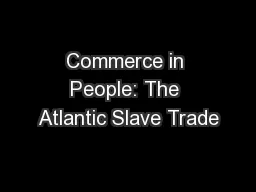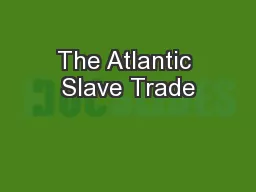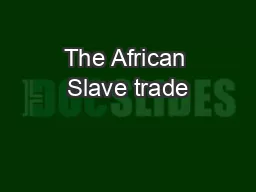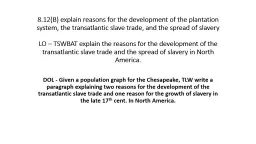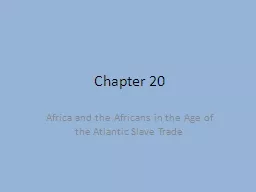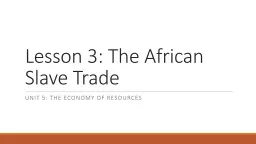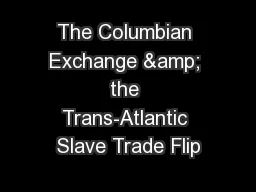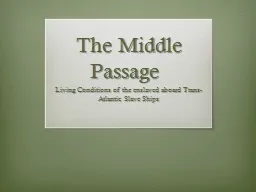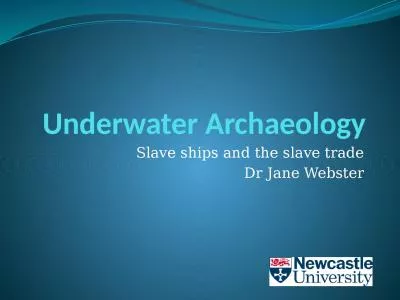PPT-Commerce in People: The Atlantic Slave Trade
Author : test | Published Date : 2018-10-22
AP World History Notes Chapter 15 The Atlantic Slave Trade Lasted from about 1500 to 1866 About 125 million Africans taken from their societies About 107 million
Presentation Embed Code
Download Presentation
Download Presentation The PPT/PDF document "Commerce in People: The Atlantic Slave T..." is the property of its rightful owner. Permission is granted to download and print the materials on this website for personal, non-commercial use only, and to display it on your personal computer provided you do not modify the materials and that you retain all copyright notices contained in the materials. By downloading content from our website, you accept the terms of this agreement.
Commerce in People: The Atlantic Slave Trade: Transcript
Download Rules Of Document
"Commerce in People: The Atlantic Slave Trade"The content belongs to its owner. You may download and print it for personal use, without modification, and keep all copyright notices. By downloading, you agree to these terms.
Related Documents

